Hands-On Global Health: Rabies Control in the Philippines

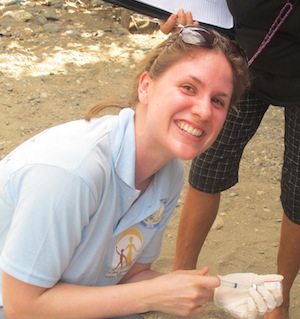 As a veterinary student volunteer for the Global Alliance For Rabies Control (GARC), I had the amazing opportunity to become immersed in the world of global health. I have always had a deeply engrained interest in public health, epidemiology and zoonoses, but prior to my work at GARC I had no hands-on experience in this field.
As a veterinary student volunteer for the Global Alliance For Rabies Control (GARC), I had the amazing opportunity to become immersed in the world of global health. I have always had a deeply engrained interest in public health, epidemiology and zoonoses, but prior to my work at GARC I had no hands-on experience in this field.
Volunteering at GARC was an incredible place to start, teaching me how the zoonotic disease is being controlled one dog at a time. My involvement last winter has confirmed and further ignited by desire to work in the non-profit sector and more specifically with GARC.
How It All Started
I was a freshman at university in Scotland the first time I heard of GARC. At the time, World Rabies Day was still a dream of Dr. Sarah Cleaveland, but she was determined to help create an organization to address this horrible, yet preventable, disease.
I was especially fascinated as I come from rabies-free Norway, where zoonoses are so rare that most people find it odd that there can be any connection whatsoever between human and animal health. In other words, I knew little about the disease and less about the prevalence in other countries. When I attended an IVSA Congress in South Korea in 2011, I was thrilled to learn that not only was World Rabies Day in fact a reality but that GARC was also up and running. I knew I wanted to get involved.
Circumstances in my life provided me with several months off from vet school the following year. I seemed to have one of those once-in-a-lifetime-opportunities — when would I ever get such a long time off from school or work? I had been thinking about GARC since my trip to South Korea.
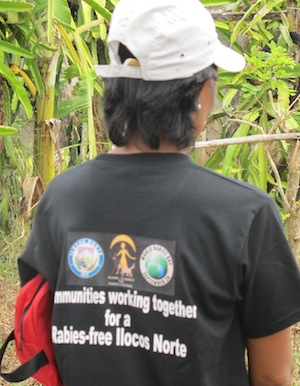 I spent a couple of months working hard and earning money, and I realized I would be able to afford one month of travelling abroad. I decided to send an e-mail to the Asian coordinator whom I had met at the IVSA Congress.
I spent a couple of months working hard and earning money, and I realized I would be able to afford one month of travelling abroad. I decided to send an e-mail to the Asian coordinator whom I had met at the IVSA Congress.
I asked her if they were planning a vaccination campaign and whether they could need an extra set of hands. I also told her that I was willing to cover my own expenses. Not long after I received a positive answer, and the next thing I knew I was on an airplane to Manila.
On the Ground in the Philippines
At the headquarters in Laguna outside of Manila City I spent my days researching rabies in literature and articles and learned about GARC´s public awareness campaigns. I was excited to be involved with their vaccination campaign in Ilocos Norte, an area of special focus for the project. Ilocos Norte is one of the provinces with the highest incidences of rabies every year. But given its boundary with the West Philippine Sea, the control of rabies in the region is realistic.
Speaking of the ocean, my colleagues at the office were eager to show me popular tourist attractions of the region. They took me to the relaxing beach of Pagudpud (hey, Winter in the Philippines is still 30+ degrees Celsius!) and let me taste the best ice cream that Philippines has to offer at a rural dragon fruit plantation.
The highlight of my stay, however, was joining the enthusiastic team on forays into villages (”Barangays”), where we went door to door and offered free vaccinations. The meetings with the people and their pets in the rural villages were memorable and eye opening to me.
 They mostly kept their dogs as pure guard dogs, and they were often afraid to restrain the dogs on their own. The dogs were nothing like the cuddly, loving pets I am used to from back home, as they simply were not treated as such. The owners were sometimes reluctant to let us give (free) vaccinations due to their lack of knowledge about the disease. Good communication skills were key, and the team members were informational and patient about answering the questions that the owners had.
They mostly kept their dogs as pure guard dogs, and they were often afraid to restrain the dogs on their own. The dogs were nothing like the cuddly, loving pets I am used to from back home, as they simply were not treated as such. The owners were sometimes reluctant to let us give (free) vaccinations due to their lack of knowledge about the disease. Good communication skills were key, and the team members were informational and patient about answering the questions that the owners had.
Although these dog owners lived in extremely poor villages, they always greeted us with an almost overwhelming hospitality. I don´t know how many times I heard the phrase ”Let´s eat!”
Logistics of the Internship
For the first week of my internship, while I was in Manila, I lived in the former house of the Asian Coordinator, which has now been turned into the GARC office. The office and kitchen were on the first floor and I had my own bedroom and bathroom on the second floor.
After we moved to Laoag City, I spent the first night at a really nice hotel, for which I paid about $35. For the next three weeks, I rented a room from a local couple, who were extremely hospitable and sweet. A new colleague of mine rented the room next door to me and I always felt safe and secure. The two bedrooms shared the entrance and bathroom.
I paid about the same amount for the three weeks in Laoag as I did for the night at the hotel, totalling $70. Yes, you read that right: seventy U.S. dollars. For three weeks. It was truly humbling to be a normal Norwegian student living in the Philippines — I felt like I was Bill Gates.
My month in the Philippines was an eye-opening and highly influential experience. I am especially grateful to have met and worked with the dedicated individuals at GARC and at the Provincial Veterinary Office of Ilocos Norte. I would like to thank Dr. Betsy Miranda, Dr. Loida Valenzuela and Dr. Jeneveve Suliva for their hospitality, continuous support, advice and encouragement during my stay. Their dedication and organization are an inspiration and it has been a privilege to gain a more comprehensive understanding of GARC and of the warm Filipino culture.
Elliott here again: Thank you to Anne Christine for sharing about this unique experience! She got in touch through my website to share about her adventure in the Philippines, and she was generous enough to write up this more comprehensive report for everyone’s benefit.
I’ve been pretty interested in rabies control myself after reading a book all about the disease late last year. You can learn more about that and some of my other book recommendations here.
I think it’s especially important for us all to notice how she went about setting the internship up. If you explore the GARC website, you’ll see that they “have no field volunteering positions.” Don’t let a simple statement like that fool you! Even though a person or an organization may not have a formal program, you will almost always find that your inquisitive mind and willing hands will be readily accepted anywhere you can imagine.
It’s not always easy to put yourself out there like this, but if you can be confident and willing to accept a rejection here and there, you will be surprised at how successful you can be in getting the experience and training you need.
Have any of you been successful in setting up an informal internship in this way?
Do you have any questions for Anne Christine about her experience in the Philippines?

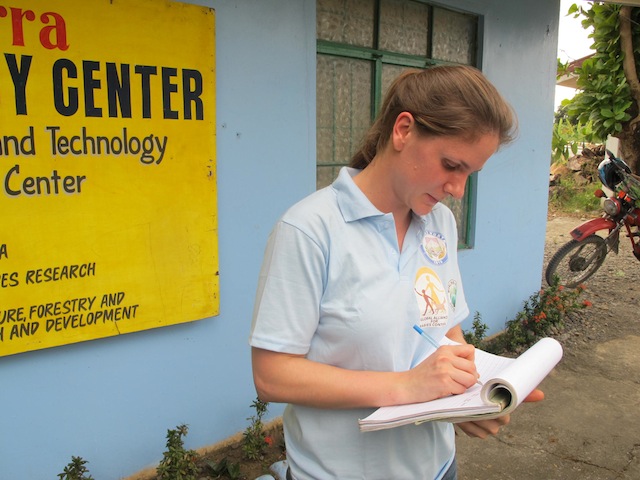
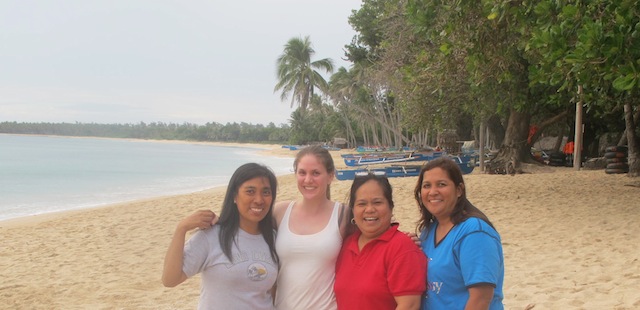

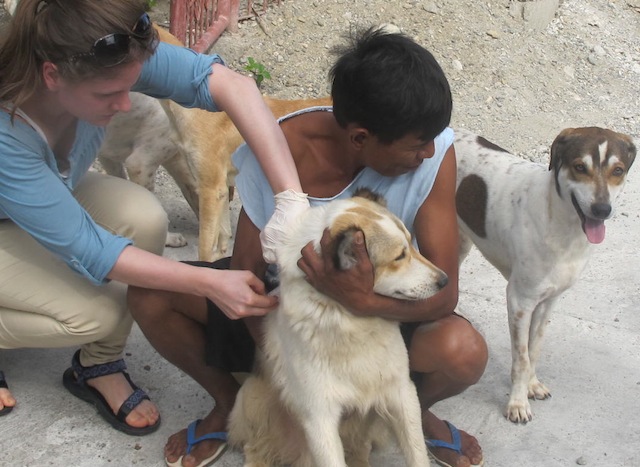
Comments
I feel the same way about being more interested in rabies since reading that book Rabid! Great experience!
I realized while reading the book that I rarely thought about the fact that rabies still has such a huge impact on many people around the world. The investment of money and time needed to eradicate dog rabies is tiny compared to what would be required for many other diseases, so I’m glad there seems to be some momentum building to actually make it happen.
“Have any of you been successful in setting up an informal internship in this way?”
I’m a pre-vet career-changer interested in global vet med, TNR, and shelter medicine.
I had an interesting experience spending spring break at one of the Middle East’s few animal shelters: http://esmaegypt.org/ I contacted them and asked about volunteering for a week, and they were happy to have me. They don’t actively try to recruit foreign and visiting volunteers, and I covered all of my own expenses, including bringing some donations (like kitten and puppy milk replacement powder and other supplements). ESMA has about 500+ cats and 500+ dogs, and it’s a struggle just to be able to afford to feed them. It was a valuable (and heartbreaking) experience for me in seeing how a shelter can operate with so little money and in a region hostile to animal welfare. Here’s a video shot by another foreign visitor that gives you an idea of how packed it was: http://www.youtube.com/watch?v=rZIICQgxG7Q
The moral of the story is that it never hurts to ask! I tacked on a 2-day visit to a TNR group on a previous trip abroad, and will be volunteering for 3 days in a shelter on my Christmas break during a vacation. It’s great to me to see how different shelters and sterilization campaigns operate around the world.
Wow, thank you for this report on your experience, Sabrina! I’ve heard of that organization but have never gotten any personal information about it from someone who has been there.